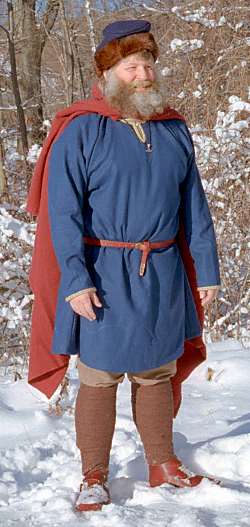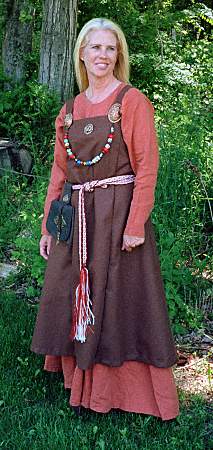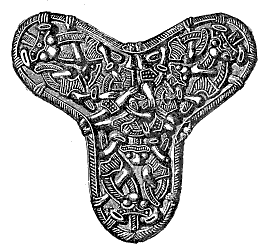Mammals: cattle, pigs, sheep, goat, oxen
Fish: cod, herring, ling
Birds: duck, chicken, goose, plover, cormorant
Cereals: oats, flax, spelt, hemp, rye, wheat, barley
Fruit: apple, blackberry,"stone fruits" (plums, slomes, damsons), strawberry, sloe, elderberry, mountain ash, rose hips, cloudberries, crabapple, juniper berries
Nuts: hazelnut walnut
Veggies: celery, carrots, turnips, swede, radish, fennel, brassicas, nettle, cress
Legumes: peas, beans
Barley was in almost every meal. Whether if it was Barley cakes, Barley and Fish or Meat and Berries, Barley was a main component. In my last post, some of you wanted me to make a Viking dish. I have decided to make Barley cakes considering desserts are my specialty in the kitchen. I'll leave the recipe at the end of the post for those who want to try it!
In order for Vikings to eat, they had to have some utensils to help them make and eat without just their hands. The utensils that have been found are pots, pans, forks, knives, spoons, kettles, strainers, metal pots and or cauldrons. They have also found wooden bowls and wooden plates. A more uncommon utensil that has been found is a large metal fork for cooking food directly above fire. Chains and tripods for hanging pots have also been found. Like the modern gridiron for making pancakes and bacon have been dug up!
For the sick and cold winter nights, Vikings used wooden, soapstone, or metal bowls for soup.
Curd draining boards, butter churns, wooden sieves with the nalbinding technique from horse hair and their version of the "sippy cup" have been found. Who knew the Vikings could be this advanced? Many would still say they were savages from their thievery but from that sippy cup they found they were pretty docile people.
Barley Cakes:
-ingredients
2 cups barley flour
water or milk to make thin batter
2-3 eggs
pinch of salt
Fish: cod, herring, ling
Birds: duck, chicken, goose, plover, cormorant
Cereals: oats, flax, spelt, hemp, rye, wheat, barley
Fruit: apple, blackberry,"stone fruits" (plums, slomes, damsons), strawberry, sloe, elderberry, mountain ash, rose hips, cloudberries, crabapple, juniper berries
Nuts: hazelnut walnut
Veggies: celery, carrots, turnips, swede, radish, fennel, brassicas, nettle, cress
Legumes: peas, beans
Barley was in almost every meal. Whether if it was Barley cakes, Barley and Fish or Meat and Berries, Barley was a main component. In my last post, some of you wanted me to make a Viking dish. I have decided to make Barley cakes considering desserts are my specialty in the kitchen. I'll leave the recipe at the end of the post for those who want to try it!
In order for Vikings to eat, they had to have some utensils to help them make and eat without just their hands. The utensils that have been found are pots, pans, forks, knives, spoons, kettles, strainers, metal pots and or cauldrons. They have also found wooden bowls and wooden plates. A more uncommon utensil that has been found is a large metal fork for cooking food directly above fire. Chains and tripods for hanging pots have also been found. Like the modern gridiron for making pancakes and bacon have been dug up!
 |
| Utensils used for cooking over a fire. |
Curd draining boards, butter churns, wooden sieves with the nalbinding technique from horse hair and their version of the "sippy cup" have been found. Who knew the Vikings could be this advanced? Many would still say they were savages from their thievery but from that sippy cup they found they were pretty docile people.
 |
| Viking spoons. |
Barley Cakes:
-ingredients
2 cups barley flour
water or milk to make thin batter
2-3 eggs
pinch of salt
Preparation:
Mix everything into a thin batter.
Cook like pancakes on griddle or frying pan.
Optionals: You can leave the eggs out but they would cook a bit better with them in.
Serve: You may add butter and honey or any sweet syrup of your choice. You may also serve them with smoked or pickled fish, roast chicken, any other meats and fruit.
Enjoy!
Mix everything into a thin batter.
Cook like pancakes on griddle or frying pan.
Optionals: You can leave the eggs out but they would cook a bit better with them in.
Serve: You may add butter and honey or any sweet syrup of your choice. You may also serve them with smoked or pickled fish, roast chicken, any other meats and fruit.
Enjoy!


